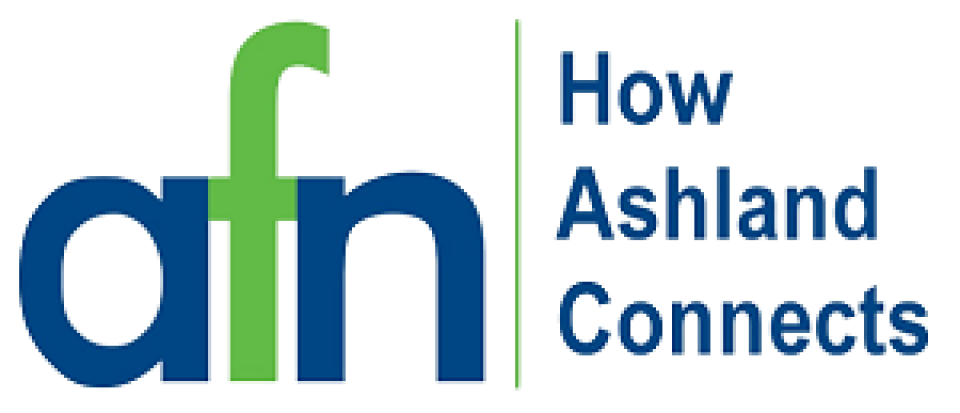
Fast, affordable Internet access for all.

On the southern border of Texas in the Rio Grande Valley, Pharr Texas is the home of the largest commercial bridge from Mexico into the U.S. Now, the city is working on building an equally impressive virtual bridge to every home in Pharr with the construction of a municipal fiber-to-the-home (FTTH) network.
The progression has been steady despite pandemic induced setbacks, as city leaders are determined to solve the connectivity challenges in Pharr by leveraging the assets the city already owns while taking advantage of the unprecedented amount of federal funds now available to help communities expand access to broadband. To that end, the city has created regional partnerships, completed a feasibility study, and launched a pilot project. Now, Pharr officials are moving ahead with the construction of a city-wide municipal network.
Wake Up Call in Rio Grande Valley
Pharr has a population of almost 80,000 people of which 94 percent identify as Hispanic or Latino with over 30 percent of families living below the poverty line. Their public meetings are often bilingual. But, it was in 2015 that the Federal Reserve Bank of Dallas reported that the Rio Grande Valley was on the wrong end of the digital divide. The report also highlighted the impact that had on the communities in the region:
The study involved focus groups with colonia residents. One theme that arose from the conversations with residents was the lack of access to the internet. The report found that the digital divide was a factor preventing residents from accessing regional labor market opportunities. Additionally, the report described the challenges colonia students face in school because of their inability to complete homework assignments due to lack of internet service and computers at home.
When earlier this week ILSR caught up with Jordana Barton Garcia, author of the report, she explained that “colonias” are informal neighborhoods where people live with no (or limited) infrastructure. Residents are sold lots without existing infrastructure, from water to broadband.
Join us live on Friday, September 16, at 1pm ET for the latest episode of the Connect This! Show. Co-hosts Christopher Mitchell (ILSR) and Travis Carter (USI Fiber) will be joined by Deborah Simpier (Co-founder at Althea Networks, Sommelier Finance, and Gravity Bridge) and Sascha Meinrath (Palmer Chair in Telecommunications at Penn State University, Founder of X-Lab). They'll discuss the advantages of different wireless deployments (LTE vs. licensed spectrum vs. unlicensed spectrum) as compared to fiber, the present and future of distributed, member-owned networks, and more.
Email us at broadband@muninetworks.org with feedback and ideas for the show.
Subscribe to the show using this feed or find it on the Connect This! page, watch on YouTube Live, on Facebook live, or below.
Join us live on Friday, September 16, at 1pm ET for the latest episode of the Connect This! Show. Co-hosts Christopher Mitchell (ILSR) and Travis Carter (USI Fiber) will be joined by Deborah Simpier (Co-founder at Althea Networks, Sommelier Finance, and Gravity Bridge) and Sascha Meinrath (Palmer Chair in Telecommunications at Penn State University, Founder of X-Lab). They'll discuss the advantages of different wireless deployments (LTE vs. licensed spectrum vs. unlicensed spectrum) as compared to fiber, the present and future of distributed, member-owned networks, and more.
Email us at broadband@muninetworks.org with feedback and ideas for the show.
Subscribe to the show using this feed or find it on the Connect This! page, watch on YouTube Live, on Facebook live, or below.
Join us live on Thursday, August 25th, at 5pm ET for the latest episode of the Connect This! Show. Co-hosts Christopher Mitchell (ILSR) and Travis Carter (USI Fiber) will be joined by regular guests Kim McKinley (UTOPIA Fiber) and Doug Dawson (CCG Consulting. They'll dig into recent news - from Starlink announcing uncharacteristic price drops to "to reflect parity in purchasing power across our customers," to big cable companies and telcos going after BEAD grants, to a reflective look on how well (or not) we did with the broadband stimulus.
Email us broadband@muninetworks.org with feedback and ideas for the show.
Subscribe to the show using this feed or find it on the Connect This! page, watch on YouTube Live, on Facebook live, or below.
Brownsville recently took a Texas-sized step toward the creation of better broadband options for its residents and businesses, as city commissioners voted in late July to enter into a public-private partnership to build a city wide fiber network known as BTX Fiber.
As reported by The Brownsville Herald:
At a Wednesday morning ceremony in city commission chambers, Brownsville Mayor Trey Mendez and Brownsville Public Utilities Board CEO and General Manager John Bruciak signed an agreement with Brian Snider, CEO of Lit Communities, that will allow the fiber infrastructure to be completely built out.
The city commission at its July 19 regular meeting approved the public-private partnership between the city, LIT Texas LLC and its subsidiary BTX Fiber, “for the construction, operations and maintenance of city-wide broadband infrastructure, including but not limited to incorporation and approval of a Right of Way and Encroachment Agreement; Engineering, Procurement and Construction Contract; and Middle Mile Connection Agreement and Grant of Indefeasible Rights of Use Agreement.
Wake up call for Brownsville
From the outside it may seem like an overnight success. But, like most stories, the planning started years ago.
Join us live on Thursday, August 25th, at 5pm ET for the latest episode of the Connect This! Show. Co-hosts Christopher Mitchell (ILSR) and Travis Carter (USI Fiber) will be joined by regular guests Kim McKinley (UTOPIA Fiber) and Doug Dawson (CCG Consulting). They'll dig into recent news - from big cable companies and telcos going after BEAD grants, to the announcement of 25 Gigabit per second service across the footprint of Chattanooga's municipal network, to the future of streaming video, to a reflective look on how well (or not) we did with the broadband stimulus.
Email us broadband@muninetworks.org with feedback and ideas for the show.
Subscribe to the show using this feed or find it on the Connect This! page, watch on YouTube Live, on Facebook live, or below.
One way or another, Grafton County, New Hampshire is lining up funding to build a massive new middle-mile network county officials hope will drive broadband competition—and more affordable fiber—into long underserved New Hampshire communities.
Grafton was one of 230 U.S. communities that applied for a National Telecommunications and Information Administration (NTIA) Broadband Infrastructure Program grant. Grafton’s specific application asked for $26.2 million to help fund the creation of the 353 mile broadband middle mile network they’re calling Grafton County Broadband Now.
Costly Challenge from National Incumbent Providers
Charter Communications filed costly challenges with the NTIA challenging the application, falsely claiming that the county’s proposal was “duplicative” and Charter already provided broadband to the region. Most of the claims were based on older, unreliable data provided to the FCC by Charter dramatically overstating broadband availability.

Grafton County surveys actually indicate the majority of county residents still can’t get access to the FCC’s base definition for broadband, 25 Megabits (Mbps) per second downstream, 3 Megabits per second upstream. Availability data across the county will likely look even worse should the FCC pass a new proposal to boost the definition of broadband to 100 Mbps.
Three years ago, the National Digital Inclusion Alliance (NDIA) ranked Cleveland as the worst-connected city in the United States (with more than 100,000 households).
City leaders are now using its American Rescue Plan funds to make that dishonorable distinction a thing of the past with a plan to invest $20 million to get the “Comeback City’s” digital future rockin’ n rollin’.
Although the city (pop. 383,000), home to the Rock & Roll Hall of Fame, is currently underserved by AT&T, Charter Spectrum, and T-Mobile, earlier this summer the city issued a Request for Proposals (RFP) that “seeks one or more partners” to help bridge Cleveland’s digital divide following a two-phased approach that first addresses the city’s immediate needs before tackling its longer-term strategic goals.
More specifically, the RFP details “the Phase I goals: ensuring that individuals who do not engage online can become full Internet users as quickly as possible, relying on digital adoption and affordable access strategies. (While) the Phase II goals (envision) —ubiquitous fiber optic connections and Smart City deployments.”
Or, as Cleveland Mayor Justin Bibb told Cleveland.com:
The first phase is on making sure on the short-term basis we connect as many families as we can to high-speed broadband, and the second phase will consist of making sure we lay fiber all across the city so we can be competitive, not just five years from now, but 20, 30 years from now, as a city and as a region.
Technically, the RFP that was issued is to fully implement the first phase of the city’s vision and set the table for the second phase. Work beyond the $20 million the city has set aside would require the issuance of a second RFP.
Spurred to action by inadequate high-speed Internet service as the pandemic besieged their communities, local officials and citizen volunteers in five rural Maine towns formed the Southwestern Waldo County Broadband Coalition (SWCBC) in an effort to bring ubiquitous and affordable broadband to its portion of Waldo County.
Two years later, the SWCBC is close to securing a major victory for local Internet choice in the face of a well-funded opposition campaign sweeping the Pine Tree State as the Big Telecom lobby and its allies try to undermine the very idea of publicly-owned, locally-controlled broadband networks in Maine and elsewhere.
The five SWCBC towns clustered about 30 miles east of Augusta – home to approximately 5,600 Mainers – are looking to create what is known as a Broadband Utility District (BUD). Four of those towns (Freedom, Liberty, Palermo, and Searsmont) recently voted in favor of establishing a BUD. Montville will be the last of the five towns to vote on whether to BUDdy up with the neighboring municipalities via an Interlocal Agreement (ILA). That vote is slated for August 23.
Similar to Communication Union Districts (CUDs) that the neighboring state of Vermont is relying on to deliver reliable and affordable broadband to its residents and businesses, Maine state law “allows towns to band together to form a community-owned organization, controlled by the municipality members but a legally separate organization - a regional non-profit utility. The BUD is allowed to incur debt that is separate from and not guaranteed by the municipalities.”
Ashland, Oregon has long been a trailblazer in terms of meeting community demand for faster, more affordable broadband access.
The city-owned network has also had a bumpy road—at times being branded as an example of municipal broadband failure. But the network continues to grow as it faces down an urgently-needed pivot toward a fiber-based future.
Despite the current economic healthiness of the network and the clear benefits it’s brought to the community over the last 20 years, local officials are talking about divesting instead of making the financial commitment to continue the investment the city has already made.
The community-owned Ashland Fiber Network (AFN) was first developed in the late 1990s by locals angry at the high prices and historically terrible customer service by the local cable company. Like so many community broadband alternatives, it was a network built from grassroots frustration at consolidated market failure.
Benefits of the community networks were on stark display during the telecommuting and home education boom of the Covid-19 crisis, when the city announced it would be providing free 30 Mbps broadband to all city residents without access to the Internet.

AFN is an open access network, meaning that numerous companies are allowed shared access to the core city network, delivering a variety of broadband, phone, and TV services. As a result, the network’s no-contract broadband pricing tends to be simpler and less expensive than options found in cities dominated by one or two private sector telecom monopolies.